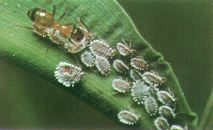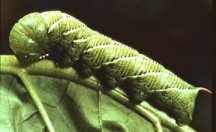| BIO326 : Predation/Competition : Coevolution : Lesson | ||||
| BIO326 : Predation/Competition : Coevolution : Lesson | ||||
 |
Glossary terms that are important in this lesson:
Aggressive mimicry, alkaloid, allopatric, aposematic, clade, cladistics, cladogram, convergence, crypsis, ectoparasite, elaiosome, endoparasite, facultative, mast, monophyletic, mycorrhizae, obligate, outgroup, phenolic, polymorphism, preadaptations, secondary compounds, symbiosis, sympatric, tannins, terpenoid, trophic, virulence. |
I. Relationships Among Species
|
 |
II. Evolutionary Responses and Coevolution
|
 |
When you have completed this lesson, go on to Review Questions
 Copyright 1999
Northern Arizona University
Copyright 1999
Northern Arizona University